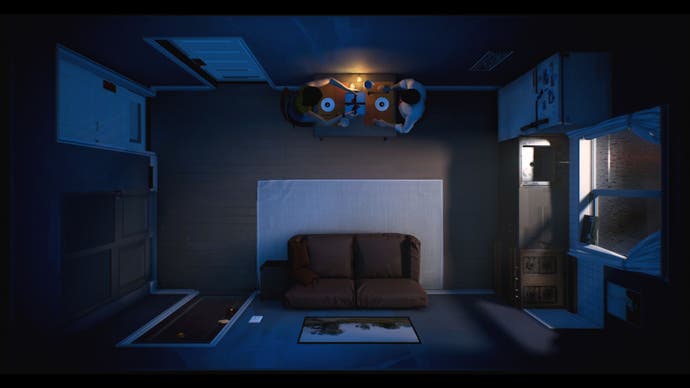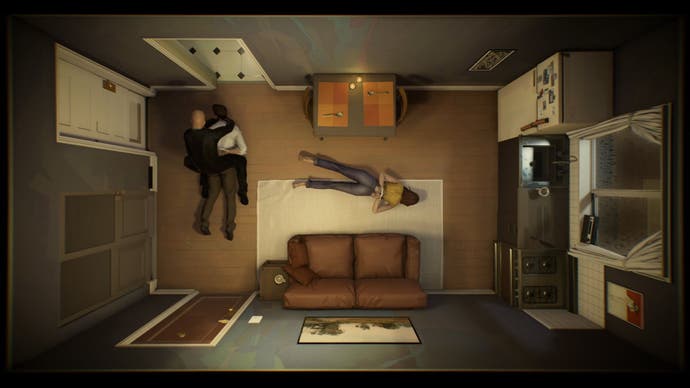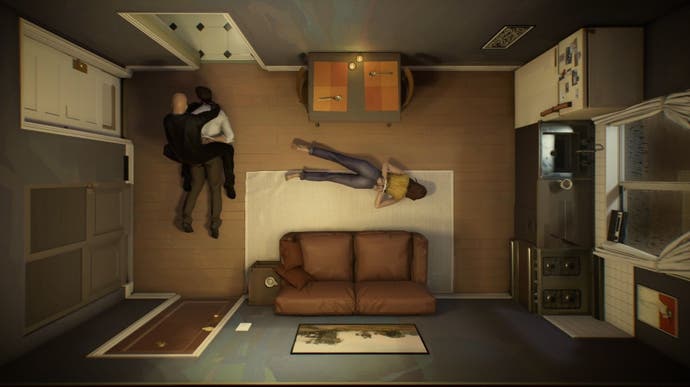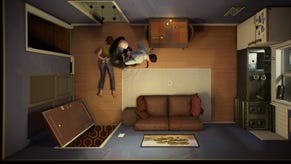Twelve Minutes is easier to understand when you think of it as a theatrical play
Scene it.
Twelve Minutes begins to make a lot more sense to me when the director, Luis Antonio, talks about it being like a play. It's not that the central time-looping concept is hard to grasp, nor that it's confusing to play - it's absolutely neither of those things. But it's hard to see how such a contained set of ideas can fill eight to 10 hours of the game's duration. Particularly as, after 25 minutes, I've apparently seen 95 percent of all the objects and things I can interact with. But when he says, "We're going for kind of a character piece like a theatre play," I begin to understand.
There are few, if any, distractions. There's one small set - an apartment - three characters, a few props, and that's it. And there are no gamey exaggerations like flashy powers or combat systems, or anything like that. Instead, there's the characters, and a drama that comes through them, through the things they say and the things they do. Like in a play. Except it's a play that rewinds roughly every 12 minutes and then runs again, and when it does, someone makes a change and triggers a chain reaction in which new character discoveries can occur. And that's how the story emerges, in evolving loops of time.
For example, the first loop around, everything was new to me. I returned home late and found the spare key to let myself in, at which point my wife came from the bedroom to announce she had news to share with me over a special dessert, which I fetched from the fridge. (Incidentally, it's a very simple game to play, like an old adventure game: one button to click on objects in the environment and drag them in or out of an inventory, and combine them together.) Then came the fateful knock on the door, from a man claiming to be the police. Naturally, I let him in, but I shouldn't have. Things went from bad to worse and I blacked out not long after. I returned to my senses as I entered my apartment again, with my wife coming out of the bedroom to greet me as though nothing had happened. It hadn't: time had rewound. But I remembered. I knew danger was coming. I could warn her, I could arm myself, I could lock the door. But would any of these things work?
It's a clever idea that hinges entirely on the performances of the characters, which is why Luis Antonio and publisher Annapurna, which also works in the movie business, hired some big names for the game: Daisy Ridley from Star Wars and Murder on the Orient Express, James Macavoy from, well, lots of things, and Willem Dafoe who I apparently look a bit like. Obviously it's a compliment because who doesn't want to look like the Green Goblin?!
And it's why the game makers went to lengths to try and coax proper performances, doing simple but effective things like ensuring Ridley and Macavoy were in the same London studio while they recorded their lines, so they could bounce off of each other. It sounds like an obvious thing to do, but it's not how many games work. Actors often record alone and their lines are stuck together afterwards, resulting in that slightly disconnected feeling you sometimes get - something Dafoe, who recorded from Italy, apparently expressly didn't want.
The cast brings undeniable star power to Twelve Minutes. Heck, a game needs to stand out these days. They also bring acting clout to the scenes, though it still felt a bit wooden and disconnected to me at times. But maybe that's due to the actors not being able to use their faces.
You see, Twelve Minutes, is viewed entirely from above, as if you were looking into an apartment through the roof. So you never see the characters' faces, apart from when you look through the peephole in the door and the view briefly changes.


It's a bold approach but it also serves a purpose. Maybe several purposes. Not seeing their faces means your imagination needs to fire to fill the missing images in, which in turn means you need to invest in the situations you see. It also sneakily means you don't need to painstakingly animate every face.
This laboratory, rat-maze kind of view also means there's nowhere to hide. Everything - that crumpled sofa, that jutting dining room table - is squidged so close together, the characters can't help but bump into each other. And this kind of claustrophobia is a classic technique in the theatre for pushing the drama together. It can't help but amp up the tension, and it does here too.
Nevertheless, there is a bit of a disconnect between the Hollywood glitz and the actual game underneath. I think it's because the stars suggest a kind of blockbuster experience when really this is not. It's more arthouse, more indie, and you can see it fairly plainly in the wood-block hands of the characters or the dated-looking faces through the peephole (there's a just-released released gameplay video with developer commentary, but it's age-gated so you have to watch it on YouTube). But does it matter? No, because your imagination will smooth the edges. And more to the point, its independent nature reassures me that Twelve Minutes is more than a superficial experience, and that those hours of game I've left to see might unearth some very interesting things.






